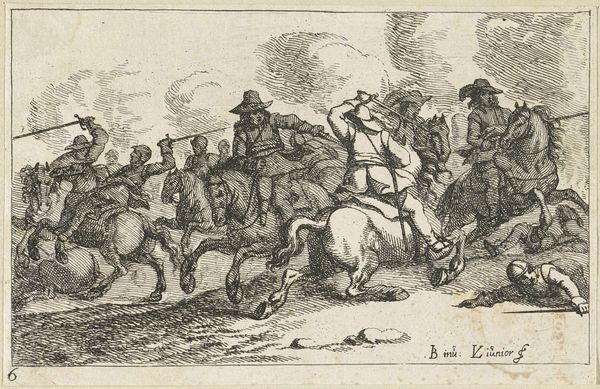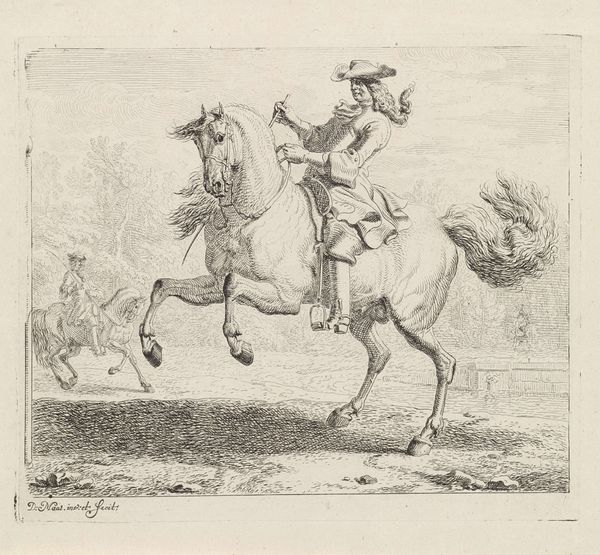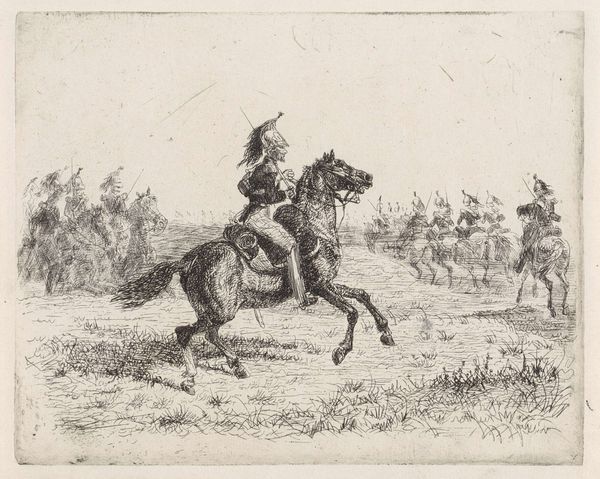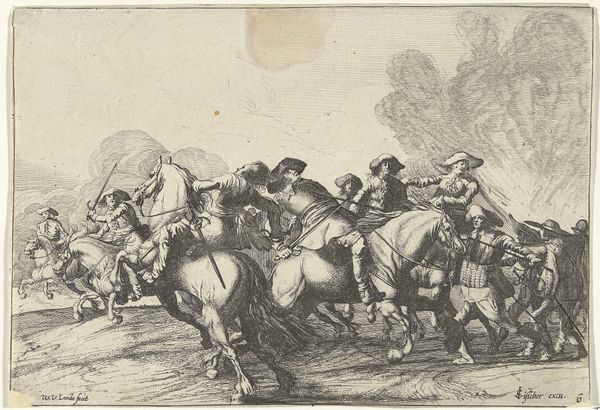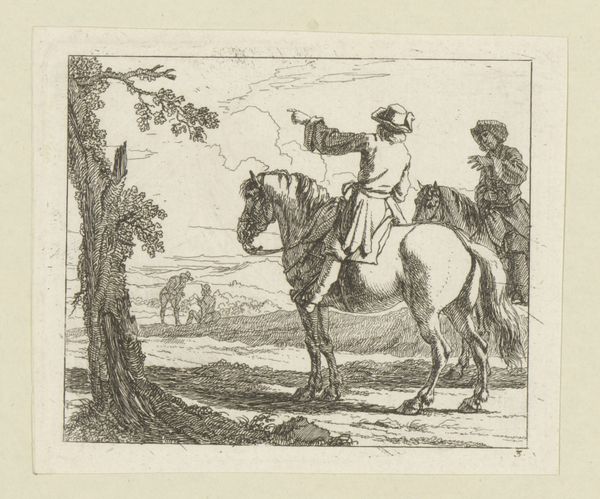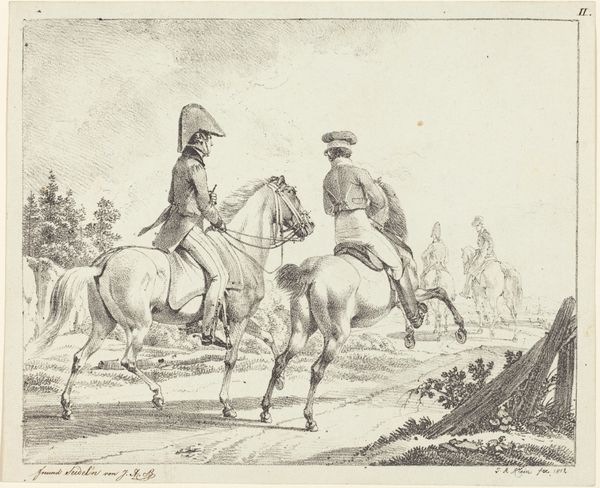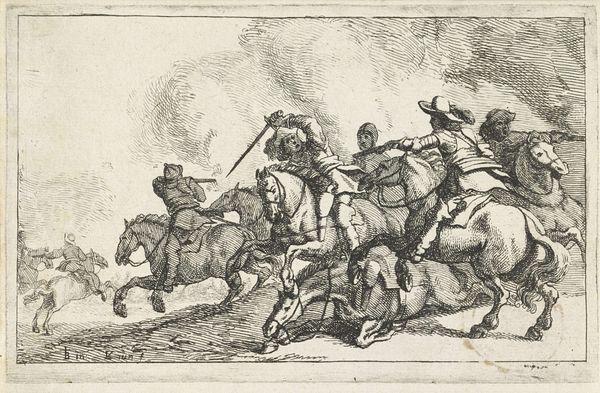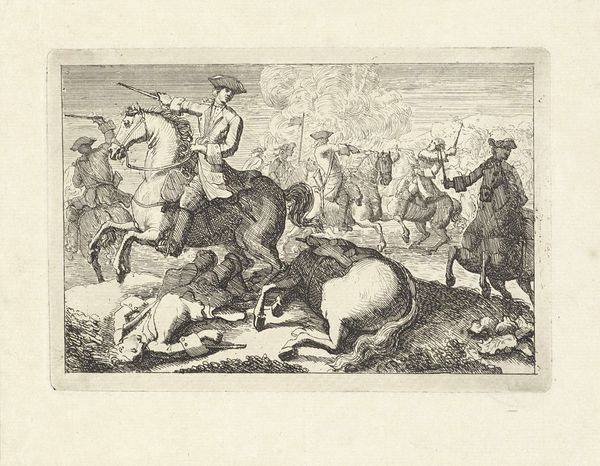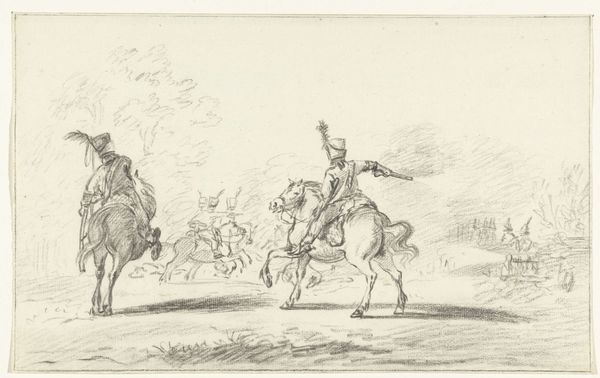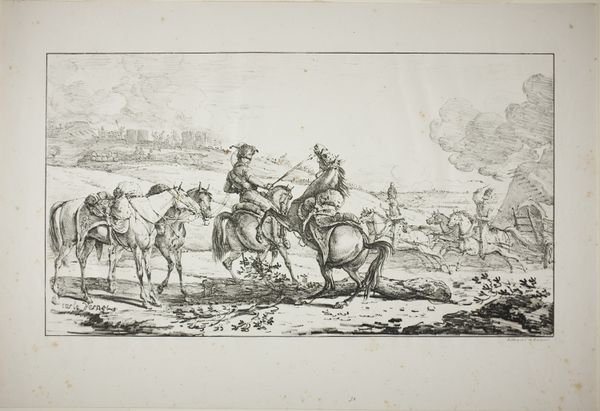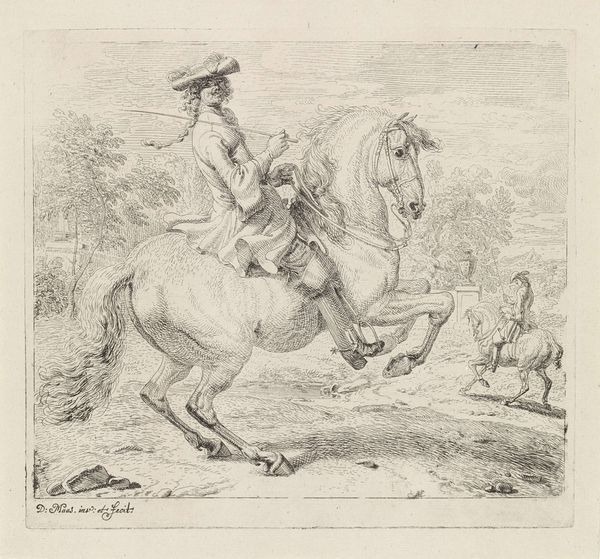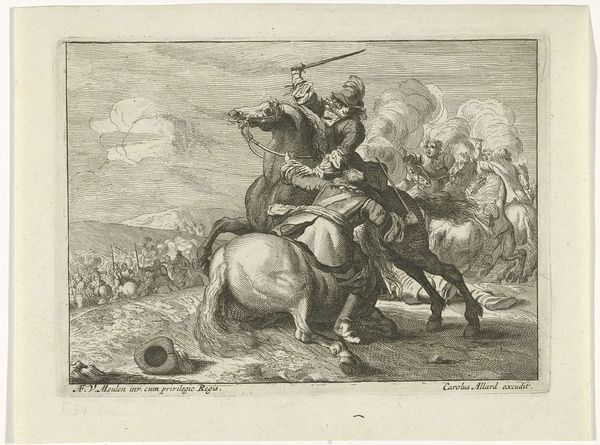
print, engraving
#
baroque
# print
#
landscape
#
figuration
#
history-painting
#
engraving
Dimensions: height 103 mm, width 158 mm
Copyright: Rijks Museum: Open Domain
Curator: Look at the chaos in this scene! A rider is twisting backward in his saddle to fire his pistol while his horse struggles through a battlefield. The energy captured is almost overwhelming. Editor: You’re right, there is such immediacy to this print. What can you tell me about it? Curator: This is an engraving by Lucas Vorsterman II, titled “Trappend paard en de ruiter achterwaarts schietend," or "Kicking horse and the rider shooting backwards". It was created sometime between 1651 and 1652, and is currently held at the Rijksmuseum. Editor: The drama of the moment feels almost theatrical. The rearing horse, the frantic gestures… It’s quite a spectacle, isn't it? Curator: Absolutely, and that theatricality has social and political roots. Consider the role of equestrian imagery in legitimizing power throughout history. Depicting mastery over a horse was frequently linked to leadership and control. Editor: But here, that control seems… challenged. The rider's desperate act suggests vulnerability. Is Vorsterman perhaps subtly undermining traditional power dynamics? Showing us that power, even when it looks like this, is precarious? Curator: That’s a valid reading. Remember, these images circulated in a specific socio-political climate. The Eighty Years’ War had just ended. Exploring these tensions, between control and chaos, would resonate deeply with a public grappling with shifts in power. Editor: And how might the very medium, the engraving, play into that? This isn’t an oil painting commissioned for a wealthy patron; it’s a print. It suggests broader dissemination, wider access, and a potentially more diverse audience engaging with these themes. Curator: Precisely! The relatively democratic nature of printmaking allows for subversive ideas to gain traction through wider viewership. Editor: It is such an amazing commentary when you consider it within a society freshly scarred by war and grappling with leadership. Curator: Exactly! It's a really dynamic intersection of technique, subject, and societal context that allows it to speak to a range of ideas.
Comments
No comments
Be the first to comment and join the conversation on the ultimate creative platform.
